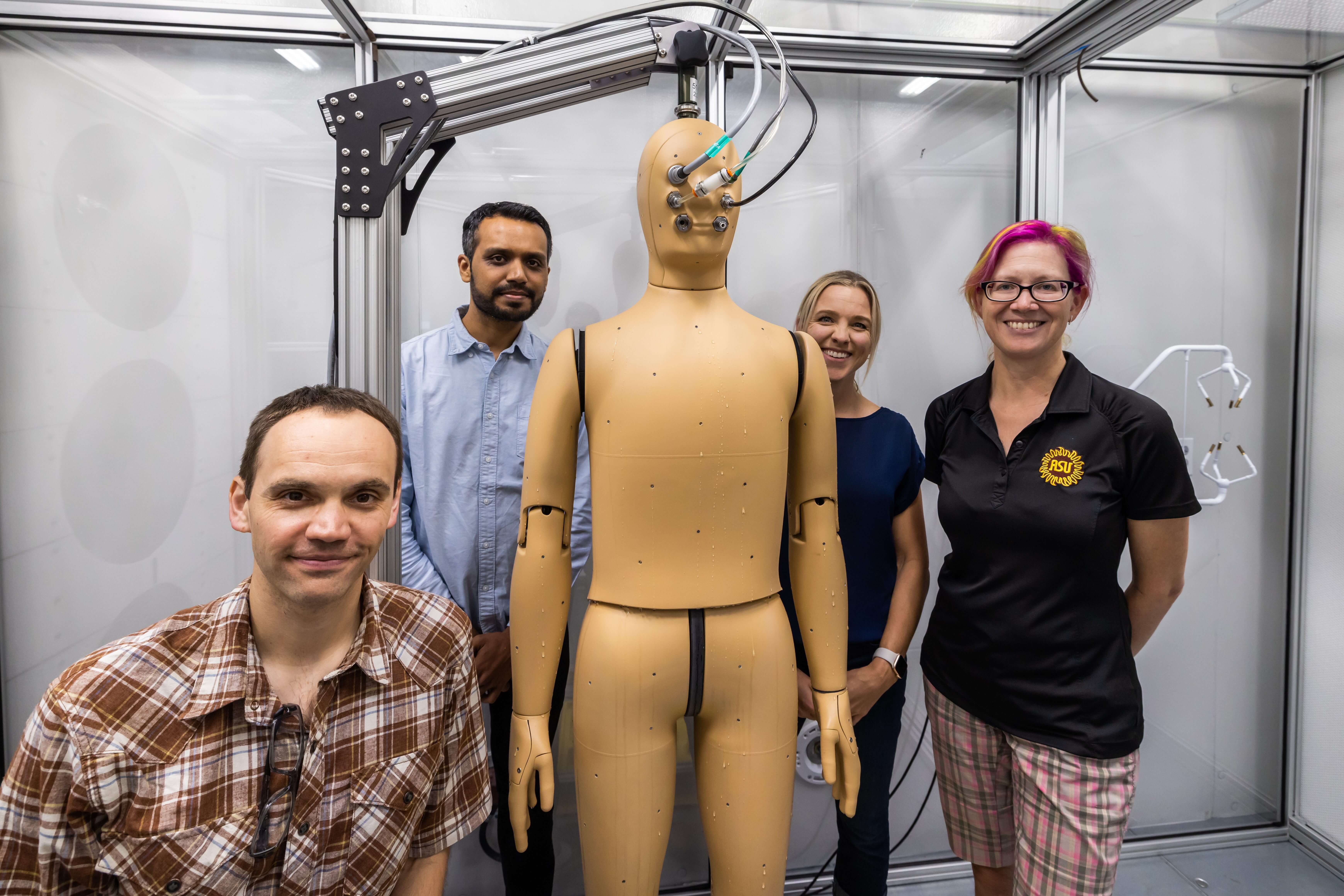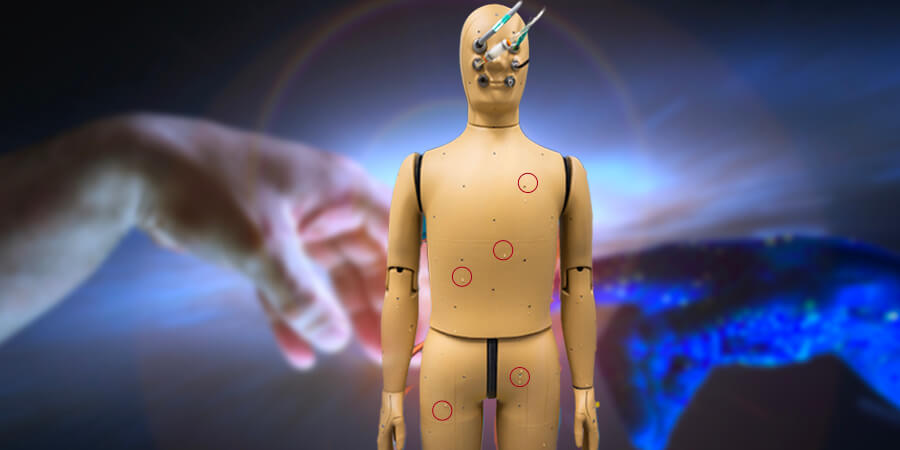Arizona State University (ASU) has made a groundbreaking advancement in the field of human simulation with the introduction of “ANDI,” the world's first outdoor manikin capable of simulating human functions. This innovative creation promises to revolutionize various industries, particularly those focused on enhancing human performance and well-being.
ANDI, short for “Advanced Natural Dynamic Interface,” is the result of extensive research and collaboration between ASU's engineering and design teams. It was developed to bridge the gap between traditional manikins used in laboratory settings and real human subjects, offering a more realistic and immersive experience for testing and evaluation.
This manikin’s capabilities extend beyond traditional manikins: it can simulate sweating, replicating the body's thermoregulation process and allowing researchers to accurately assess the impact of different environmental conditions on human physiology. This feature is invaluable in fields such as sports science, outdoor apparel design and military training, where understanding the body's response to heat and humidity is crucial.
Additionally, ANDI can replicate natural breathing patterns, enabling researchers to study respiratory responses in various scenarios. This allows for a deeper understanding of the effects of different environments on lung function and overall health.

Equipped with advanced robotic limbs, ANDI can also mimic human gait patterns and movements. This breakthrough opens up possibilities in areas such as ergonomic design, rehabilitation engineering and human-robot interaction. By evaluating how the body moves and responds to different walking conditions, researchers can optimize designs for better comfort, performance and injury prevention.
ANDI‘s versatility goes beyond indoor simulations. ASU has developed a dedicated heat chamber, known as the “Warm Room,” where researchers can simulate heat-exposure scenarios from various locations around the globe. This chamber is equipped with advanced technologies that control wind, temperature (up to 140 degrees Fahrenheit) and solar radiation. However, what sets ANDI apart is its ability to be used outdoors, making it the only thermal manikin in the world with this capability.
ANDI is built with internal cooling channels that circulate cool water throughout its body, enabling it to withstand extreme heat while accurately measuring complex variables contributing to our perception of heat in different environments. These variables include solar radiation from the sun, infrared radiation from the ground and convection from the surrounding air.
ASU's development of ANDI represents a commitment to pushing the boundaries of innovation and fostering interdisciplinary collaboration. The project brings together experts from various fields, including engineering, design, physiology and biomechanics, to create a truly groundbreaking tool that can benefit a wide range of industries.
Sarah Thompson, the lead researcher behind the project, emphasized the significance of ANDI: "This is a major milestone in the field of human simulation. ANDI will allow us to gather data in a more realistic and accurate manner, enabling us to develop solutions that better address the needs of individuals in different environments and situations."
The introduction of ANDI is expected to have a transformative impact on industries such as sports science, apparel design, occupational health and safety, and healthcare. Researchers and professionals in these fields now have access to a state-of-the-art tool that provides more reliable and precise data, leading to improved product design, training methodologies and overall human well-being.
As ASU continues to refine and expand the capabilities of ANDI, the world eagerly awaits the possibilities that this remarkable outdoor manikin will unlock in the realm of human simulation and performance optimization.








